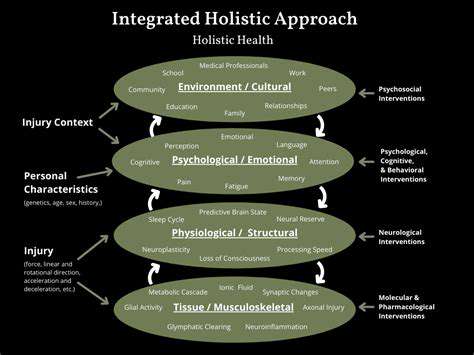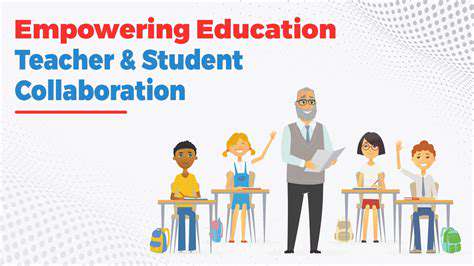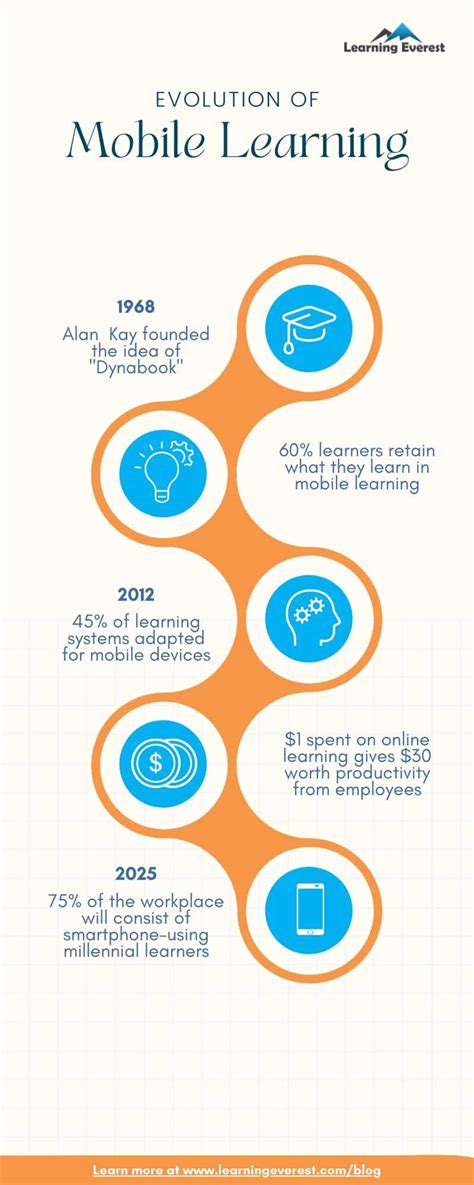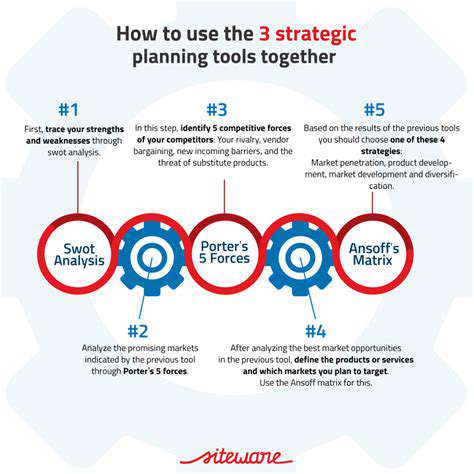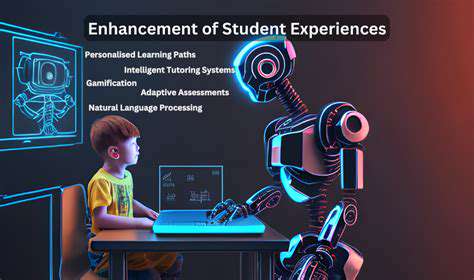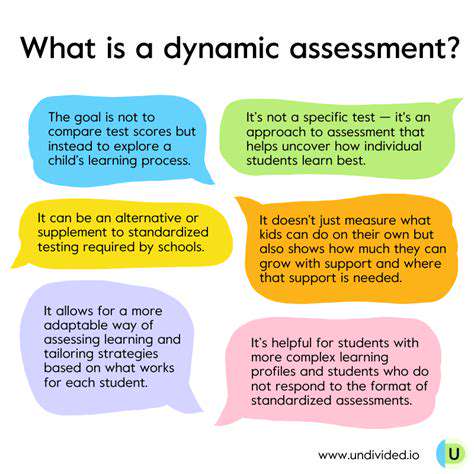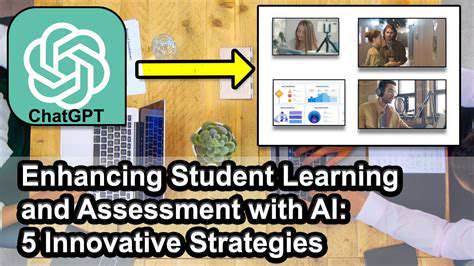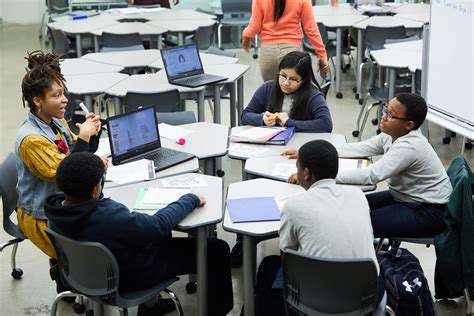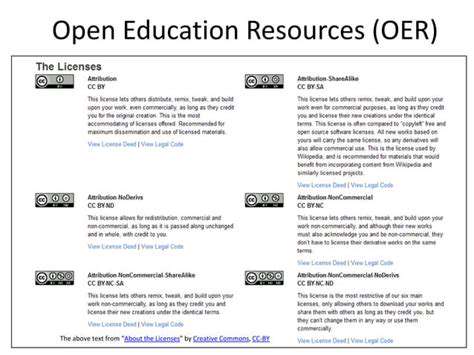AI for Differentiated Instruction: Tailoring Education to Every Student
Personalized Learning Paths
AI-powered platforms can analyze individual student data, including learning styles, strengths, and weaknesses, to create personalized learning paths. This approach moves beyond a one-size-fits-all curriculum, tailoring content and pacing to meet each student's unique needs. Instead of a rigid schedule, students can progress at their own speed, focusing on areas where they need more support and celebrating their mastery of concepts.
This personalized approach can significantly improve engagement and motivation, as students feel more connected to the material and see their progress reflected in the learning experience. It also allows teachers to focus on providing individualized support, addressing specific challenges and fostering deeper understanding.
Adaptive Assessments and Feedback
AI can automate the assessment process, providing immediate and targeted feedback to students. These adaptive assessments adjust the difficulty of questions based on student responses, ensuring that the assessment accurately reflects the student's current understanding. This constant feedback loop allows for continuous improvement and identification of knowledge gaps in real time, promoting a proactive rather than reactive approach to learning.
This immediate feedback is crucial for both students and teachers. Students receive guidance on where they need to focus their efforts, while teachers gain insights into the strengths and weaknesses of the entire class, allowing for more effective instruction.
Data-Driven Instruction
AI tools can analyze vast amounts of student data to identify trends and patterns in learning. This data-driven insight allows teachers to make informed decisions about their instructional strategies. For example, if a particular concept consistently proves challenging for a group of students, teachers can adjust their teaching methods to better address those specific learning difficulties.
This data-driven approach empowers teachers with valuable insights, enabling them to tailor their lessons and create a more effective learning environment. It shifts the focus from generalized instruction to a more nuanced and responsive approach that addresses the specific needs of each student.
AI-Powered Tutoring and Support
AI tutors can provide personalized support to students outside of the classroom. These virtual tutors can answer questions, provide explanations, and offer practice exercises, all tailored to the individual student's needs. This personalized support extends learning beyond the classroom, providing extra help and reinforcement when needed. This extra support can be invaluable for students who may require additional assistance or want to explore topics in more depth.
Enhanced Accessibility and Inclusivity
AI can be used to create more accessible and inclusive learning environments. For example, AI-powered tools can translate languages in real time, providing opportunities for students from diverse linguistic backgrounds to fully participate in the learning process. AI can also create customized learning materials for students with disabilities, ensuring that they have access to the same quality of education as their peers.
Furthermore, AI can identify and address potential biases in educational materials and assessments, promoting a fairer and more inclusive learning experience for all students. By removing barriers and ensuring equitable access, AI helps create a truly diverse and inclusive learning environment.
Future of Education: A Collaborative Approach
The integration of AI in education is not about replacing teachers but about empowering them with new tools and resources to enhance their effectiveness. AI can handle repetitive tasks, freeing up teachers' time to focus on building relationships with students, fostering critical thinking, and providing personalized support. This collaborative approach is crucial for ensuring that the benefits of AI are effectively implemented and that the human element of education remains central to the process.
By working together, teachers and AI can create a powerful synergy that fosters a more engaging, effective, and personalized learning experience for all students. This transformative approach will shape the future of education, creating opportunities for students to reach their full potential.
AI-Driven Assessment and Feedback Loops
AI-Powered Personalized Learning Paths
AI-driven assessment tools can analyze student performance data in real-time, identifying strengths and weaknesses across various learning domains. This allows educators to tailor learning paths for individual students, ensuring that each learner receives the appropriate level of support and challenge. By pinpointing areas where students excel and those requiring further development, AI facilitates a dynamic and personalized learning experience that fosters deeper understanding and engagement.
These personalized learning paths aren't static; they adapt continuously based on the student's progress. The system can adjust the pace, complexity, and focus of the material presented, ensuring that the student is consistently challenged and motivated. This adaptability is crucial for addressing diverse learning styles and paces, promoting student autonomy, and ultimately achieving better learning outcomes.
Automated Feedback for Enhanced Understanding
AI can automate the provision of timely and constructive feedback, significantly reducing the workload on educators. This automated feedback isn't just about identifying correct or incorrect answers; it delves into the reasoning behind the student's responses, offering specific suggestions for improvement and highlighting common misconceptions. This detailed feedback allows students to understand their errors more effectively and fosters a deeper understanding of the subject matter.
Moreover, automated feedback loops can be integrated into interactive learning platforms, providing instant responses to student input, quizzes, or assignments. This immediate, targeted feedback promotes active learning and allows students to refine their understanding in real-time. It fosters a cycle of continuous learning and improvement, allowing students to address misconceptions and strengthen their knowledge base.
Data-Driven Insights for Educators
AI-driven assessment systems provide valuable data insights for educators, empowering them to make informed decisions about their instruction. These insights extend beyond individual student performance; they offer a comprehensive view of class performance, revealing trends and patterns that might otherwise go unnoticed. Educators can use this data to identify areas where the class as a whole needs support, adjusting their teaching strategies accordingly for greater effectiveness.
This data-driven approach allows educators to personalize their teaching strategies, create more effective lesson plans, and tailor their instruction to address the specific needs of their students. By leveraging AI's ability to analyze large datasets, educators can gain a deeper understanding of student learning styles, preferences, and challenges, ultimately leading to a more effective and engaging learning environment for all.
Improving Differentiation and Equity
AI-powered assessment and feedback loops are crucial for achieving greater equity in education. By providing personalized learning paths and targeted support, AI can ensure that all students have the opportunity to succeed, regardless of their background or learning style. This is particularly important for students who may require additional support or differentiated instruction to reach their full potential.
AI systems can also identify and address potential biases in existing assessment methods, ensuring that all students are evaluated fairly and accurately. This commitment to fairness and equity is essential for creating a more inclusive and equitable learning environment for every student. In conclusion, AI-driven assessment and feedback systems are transforming education, creating a more personalized, effective, and equitable learning experience for all.
Adapting to Diverse Learning Needs: Addressing Specific Challenges
Catering to Varying Learning Styles
Different learners absorb information in unique ways. Visual learners thrive on diagrams and graphics, while auditory learners benefit from lectures and discussions. Kinesthetic learners prefer hands-on activities and practical application. Recognizing these diverse learning styles is crucial for effective instruction. AI-powered tools can adapt to these preferences by presenting material in multiple formats, dynamically adjusting the pace of learning, and offering personalized feedback tailored to individual learning styles.
AI can also create interactive simulations and virtual environments that cater to kinesthetic learners, making abstract concepts more tangible and engaging. This personalized approach to learning significantly enhances understanding and retention.
Addressing Learning Disabilities
Students with learning disabilities, such as dyslexia or ADHD, often face unique challenges in traditional learning environments. AI can provide significant support by offering assistive technologies like text-to-speech software, personalized learning plans, and tools that help manage distractions. These tools can help learners overcome obstacles, improving their access to and engagement with educational content.
Furthermore, AI can analyze learning patterns and identify areas where a student might be struggling, allowing educators to proactively intervene and adjust their teaching strategies. This proactive approach can make a substantial difference in the academic success of students with learning differences.
Supporting Students with Different Backgrounds
Students from diverse cultural and socioeconomic backgrounds may have varying levels of prior knowledge and access to resources. AI can help bridge these gaps by providing personalized learning pathways that account for individual needs and experiences. This can include adapting the language used in instruction, providing supplementary materials in different languages, or offering support tailored to specific cultural contexts.
Enhancing Accessibility for Students with Disabilities
AI-powered tools can significantly enhance accessibility for students with disabilities. Features like screen readers, alternative input methods (such as voice recognition), and closed captioning for videos can make educational content more accessible to a wider range of learners. These tools can help students with visual, auditory, or motor impairments participate fully in the learning process.
Improving Language Acquisition and Literacy
AI can revolutionize language acquisition and literacy development. AI tutors can provide personalized feedback on language usage, identify areas needing improvement, and offer customized exercises. This personalized approach can significantly accelerate language learning, fostering fluency and confidence in communication. Moreover, AI can adapt to different learning levels, tailoring instruction to meet the specific needs of each student.
Empowering Educators with Data-Driven Insights
AI can empower educators by providing data-driven insights into student performance and learning patterns. This data can help educators identify individual student needs, track progress over time, and adjust teaching strategies accordingly. By analyzing student interactions with learning materials, AI can pinpoint areas where students are struggling and offer targeted interventions.
The Future of Education: Embracing AI for Enhanced Learning Outcomes
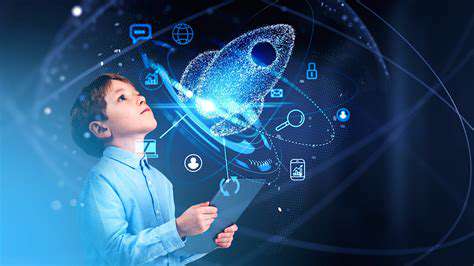
The Rise of Personalized Learning
Personalized learning is rapidly transforming the educational landscape, moving away from a one-size-fits-all approach. This innovative method tailors educational experiences to the unique needs, learning styles, and pace of each student. By understanding individual strengths and weaknesses, educators can create customized learning paths that foster deeper engagement and knowledge retention. This approach not only improves academic outcomes but also cultivates a greater love of learning in students.
Personalized learning platforms are increasingly sophisticated, utilizing data analytics and adaptive technologies to provide students with targeted support. These platforms can assess a student's progress in real-time and adjust the curriculum accordingly, ensuring that every student receives the specific instruction they need. This personalized support can lead to significant improvements in student performance and a more enriching learning experience.
Integrating Technology into the Classroom
Technology is no longer a supplementary tool in education; it's becoming an integral part of the learning process. From interactive whiteboards to virtual reality simulations, technological advancements are revolutionizing how students learn and interact with the material. This integration fosters a more engaging and dynamic learning environment, empowering students to explore concepts in novel and exciting ways.
Interactive learning tools and digital resources are expanding the possibilities for educators, enabling them to create more dynamic and engaging lessons. This technological integration encourages active learning, critical thinking, and problem-solving skills development. The use of technology also opens doors to learning beyond the confines of the traditional classroom, connecting students with global resources and experts.
Fostering Collaboration and Communication
Collaboration and communication are essential skills in today's interconnected world. Educational institutions are increasingly focusing on fostering these skills within the curriculum. Group projects, online forums, and collaborative learning platforms are becoming more prevalent, enabling students to work together to solve problems and share ideas.
Developing strong communication skills is crucial for success in any field. By encouraging students to communicate effectively and collaborate with their peers, educational systems can better prepare them for future career opportunities and real-world challenges. This emphasis on collaboration also helps students develop empathy and understanding of diverse perspectives.
Emphasis on Critical Thinking and Problem-Solving
In today's rapidly changing world, critical thinking and problem-solving skills are more important than ever. Educational institutions are recognizing this need and incorporating these skills into their curricula, encouraging students to analyze information, evaluate arguments, and develop creative solutions. This approach equips students with the tools they need to navigate complex situations and make informed decisions.
Cultivating a culture of critical thinking is essential for preparing students for the demands of the future. This involves engaging them in activities that encourage inquiry, debate, and the exploration of alternative perspectives. By emphasizing these skills, educational systems can empower students to become active and engaged citizens.
Adapting to Diverse Learning Needs
Education must embrace the diversity of learning styles and needs within its student population. This includes accommodating students with disabilities, providing support for English language learners, and catering to students from diverse cultural backgrounds. By creating inclusive and supportive learning environments, schools can ensure that all students have the opportunity to succeed.
Understanding and addressing the unique needs of each student is paramount. This requires a flexible and adaptable approach to teaching and learning, ensuring that all students feel valued and supported in their educational journey. This commitment to inclusivity fosters a sense of belonging and empowers all students to reach their full potential.
Evaluating and Measuring Learning Outcomes
Effective education requires ongoing evaluation and assessment to measure learning outcomes and identify areas for improvement. This involves using a variety of assessment methods, including traditional tests, projects, and portfolios, to gauge student understanding. Data analysis of these results can inform adjustments to teaching practices to ensure optimal learning.
Moving beyond traditional methods of evaluation is vital. This includes incorporating more holistic measures, such as observations of student participation, projects, and presentations. By using a variety of assessment methods, educators can gain a comprehensive understanding of student progress and identify areas where further support is needed.
Read more about AI for Differentiated Instruction: Tailoring Education to Every Student
Hot Recommendations
- The Gamified Parent Teacher Conference: Engaging Stakeholders
- Gamification in Education: Making Learning Irresistibly Fun
- The Future of School Libraries: AI for Personalized Recommendations
- EdTech and the Future of Creative Industries
- Empowering Student Choice: The Core of Personalized Learning
- Building Community in a Hybrid Learning Setting
- VR for Special Education: Tailored Immersive Experiences
- Measuring the True Value of EdTech: Beyond Adoption Rates
- Addressing Digital Divide in AI Educational Access
- Preparing the Workforce for AI Integration in Their Careers
